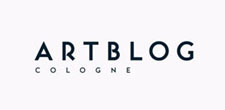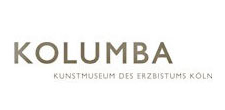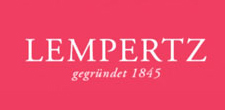EDITORIAL # 58
Kathrin Bentele

Kathrin Bentele ist Kuratorin und Autorin und leitet seit Oktober 2021 den Kunstverein für die Rheinlande und Westfalen, Düsseldorf. Zuvor arbeitete sie bei den KW Institute for Contemporary Art, Berlin; Artists Space, New York; Kunsthaus Glarus; dem Kunstbuchverlag JRP Ringier, Zürich; oder der Kunst Halle St. Gallen. Am Kunstverein für die Rheinlande und Westfalen realisierte sie die Gruppenausstellung CLOSER mit James Benning, Alejandro Cesarco, Steffani Jemison, Park McArthur & Constantina Zavitsanos, Josiane M.H. Pozi und Tiffany Sia sowie Einzelausstellungen mit Yuki Kimura, Angharad Williams, Matthias Groebel und Jessica Vaughn.
Kathrin Bentele is a curator and author and, since October 2021, director of the Kunstverein für die Rheinlande und Westfalen, Düsseldorf. Previously, she worked at KW Institute for Contemporary Art, Berlin; Artists Space, New York; Kunsthaus Glarus; the art book publisher JRP Ringier, Zurich; and Kunst Halle St. Gallen. At the Kunstverein für die Rheinlande und Westfalen she realized the group exhibition CLOSER with James Benning, Alejandro Cesarco, Steffani Jemison, Park McArthur & Constantina Zavitsanos, Josiane M.H. Pozi, and Tiffany Sia, as well as solo exhibitions of Yuki Kimura, Angharad Williams, Matthias Groebel, and Jessica Vaughn.

CLOSER, Kunstverein für die Rheinlande und Westfalen, Düsseldorf, 2022, Photo: Cedric Mussano
Wie würdest Du Deine kuratorische Arbeit beschreiben? Welchen Einfluss hatten die institutionellen Kontexte, in denen Du gearbeitet hast?
Mit Ausnahme der KW Institute for Contemporary Art in Berlin (die zu Beginn der 90er von einem Kollektiv von kunstinteressierten Studierenden um Klaus Biesenbach gegründet wurde) ist meine kuratorische Arbeit von Kontexten geprägt, die ursprünglich auf Künstler:innen-Initiativen zurückgehen und deren Ethos und Selbstverständnis eng mit künstlerischen Interessen verbunden ist. Meine erste Berührung mit institutioneller Arbeit fand in der Kunsthalle St. Gallen statt, die mein Interesse am Kuratieren in einem institutionellen Kontext wesentlich geprägt hat – eine in den 1980er Jahren gegründete Kunsthalle, die zunächst in temporären Zwischennutzungen aus dem Bedürfnis einer lokalen Künstler:innenschaft ent- stand, auszustellen, sich international zu vernetzen und auf schwierige städtebauliche Entwicklungen reagieren zu können. Ich fühlte mich von solchen nicht-musealen, beweglichen und flexiblen Kontexten immer angezogen; auch Artists Space in New York (wo ich später arbeitete), verkörpert für mich einen Geist, der relativ unmittelbar auf künstlerische Entwicklungen reagieren kann und der offen und adaptiv ist für verschiedene künstlerische Formen und ihre Anliegen. Diese Orte bieten eine Alternative zu musealen und kommerziellen Räumen; sie operieren stärker ergebnisoffen und sind oft treibende Kräfte, um das Format der Ausstellung (und den Status des Kunstwerks) neu zu verhandeln, anders zu denken und die Dimension von räumlicher und ortsspezifischer Erfahrung mit einzubeziehen. Mich hat immer sehr interessiert, künstlerische Arbeit in all ihren Dimensionen zu verstehen, woher sie kommt, warum sie sich in welche Richtung entwickelt und welche sozialen, ästhetischen, intellektuellen und psychologischen Anliegen sie vorantreiben. Dies übt eine große Faszination auf mich aus und ich versuche, künstlerischen Prozessen gegenüber so reaktionsfähig und offen wie möglich zu sein. Die Kunstvereins-Struktur verkörpert das auch – es ist ein Gefäß, das im internationalen Kontext einmalig und schützenswert ist und in dem kuratorische und künstlerische Handschriften Form annehmen, sich kristallisieren und wachsen können.
How would you describe your curatorial work? How was it influenced by the institutional contexts you’ve worked in?
With the exception of KW Institute for Contemporary Art in Berlin (which was founded in the early 1990s by a collective of art-interested students around Klaus Biesenbach), my curatorial work has been defined by contexts that originally evolved from artists’ initiatives and whose ethos and self-conception are closely linked to artistic interests. My first exposure to institutional work was at Kunst Halle St. Gallen, which had an essential impact on my interest in curating in an institutional context. Founded in the 1980s, this is a kunsthalle which operated initially in a temporary interim-use space and developed out of the needs of the local artist community to exhibit, to network internationally, and to be able to respond to challenging urban infrastructure developments. I’ve always been attracted to such non-museal, adaptive, and more flexible contexts: Artists Space in New York (where I later worked), also embodies for me a spirit that’s able to respond to artistic developments in an adaptive and relatively direct way and that is open to different artistic forms and their concerns. Such venues offer an alternative to museum und gallery spaces, operating in a more open-ended way and are often driving forces in renegotiating and rethinking the format of the exhibition (and the status of the artwork), and in integrating the dimensions of spatial and site-specific experience. It’s always been very interesting for me to understand artistic work in all its dimensions: where it comes from, how and why it evolves in a certain direction, and what social, aesthetic, intellectual, and psychological concerns drive it. This holds a great fascination for me and I try to be as responsive and open to artistic processes as possible. The kunstverein structure also embodies this: it is a vessel that is unique and worth preserving within the international context, and in which curatorial and artistic signatures can take shape, crystallize, and grow.

Angharad Williams, Eraser, Kunstverein für die Rheinlande und Westfalen, Düsseldorf, 2022

Yuki Kimura, COL SPORCAR SI TROVA, Kunstverein für die Rheinlande und Westfalen, Düsseldorf, 2022, Photo: Cedric Mussano
Welche Fragestellungen haben aktuell besondere Relevanz für
Deine Arbeit am Kunstverein?
Mit der Energie- und Klimakrise, der Pandemie und einer gewissen Erschöpfung und Sättigung, die sich im westlichen Kunstmarkt in den letzten Jahren eingestellt hat, suche ich nach Formen der Zusammenarbeit mit Künstler:innen, die erlaubt, mehr vor Ort (und für den Ort) zu produzieren und weniger bereits existierende Arbeiten einzufliegen. Die Bereitstellung eines Studios in Düsseldorf, wo Arbeiten vor Ort entstehen können, ist eine solche Form, die wir aktuell für die in Los Angeles lebende Künstlerin Fiona Connor ausprobieren. Das Thema berührt für mich auch die Kommunikationsfähigkeit und Verbindlichkeit einer Ausstellung an einem konkreten Ort, mit seiner spezifischen Geschichte und Infrastruktur, und was davon potentiell den künstlerischen Prozess informieren und beeinflussen kann und soll. Das Gespräch, was ich gerade mit Fiona Connor führe, versucht Anknüpfungspunkte herzustellen zwischen ihrer Studiopraxis in Los Angeles – die auf aufwendigen Nachbildungen von architektonischen Strukturen und Objekten basiert – und einer spezifischen materiellen und sozialen Geschichte Düsseldorfs und des Rhein-Ruhr-Gebiets. Fionas Vater war ein Bauingenieur bei der Firma Cubitt Wells und besuchte in den 50er Jahren Baustellen in Düsseldorf und Essen (beispielsweise die Baustelle der Düsseldorfer Börse), um hier organisatorische und bauliche Prozesse „am Modell“ zu studieren. Die Fotografien und Archivmaterialien, die er ihr von diesen Reisen hinterlassen hat, bilden für Fionas Ausstellung einen Ausgangspunkt, um diese Orte nochmal zu besuchen und davon ausgehend neue Arbeiten zu entwickeln. Das Thema Nachhaltigkeit berührt für mich nicht nur die Frage der Ökobilanz und der Wiederverwertung von Materialien, sondern auch eine soziale Dimension; dass Ausstellungen für einen bestimmten Ort entstehen, und in der Form nicht austauschbar, beliebig oder anonym sind, sondern ein Resultat von Gesprächen, Vertrauen und gemeinsam verbrachter Zeit.
What issues currently have particular relevance for your work at the Kunstverein?
With the energy and climate crises, the pandemic and a certain exhaustion and sense of surfeit that has set in within the Western art market in recent years, I’m looking for forms of collaboration with artists that allow for more on-site (and forsite) production and less flying-in of existing work. Providing a studio in Düsseldorf where work can be created on-site is one such form we are currently trying out with the Los Angelesbased artist Fiona Connor. For me, this issue also speaks to the communication and bond an exhibition can have with a specific place, with its specific history and infrastructure, and what of this potentially can or should inform and influence the artistic process. The conversation I’m currently having with Fiona Connor is an attempt to establish links between her studio practice in Los Angeles—which is based on elaborate recreations of architectural structures and objects—and a specific material and social history of Düsseldorf and the Rhine-Ruhr area. Fiona’s father was a civil engineer with the Cubitt Wells company and visited construction sites in Düsseldorf and Essen in the 1950s (for example, the construction site of the Düsseldorf Stock Exchange) in order to study organizational and construction processes “first hand.” The photographs and archival materials he left her from these trips provide Fiona’s exhibition with a starting point for revisiting these sites and developing new works. The issue of sustainability touches, for me, not only on questions of environmental footprints and the recycling of materials, but also has a social dimension; that exhibitions are created for a specific place, and have a form that is not interchangeable, arbitrary, or anonymous, but are the result of conversations, trust, and time spent collectively

Jessica Vaughn, I 🖤 CUSTOMERS, Kunstverein für die Rheinlande und Westfalen, Düsseldorf, 2022, Photo: Cedric Musano

Matthias Groebel, A Change in Weather (Broadcast Material 1989–2001), Kunstverein für die Rheinlande und Westfalen, Düsseldorf, 2022, Photo: Cedric Mussano
Wenn Du in die Ausstellungsgeschichte des Kunstvereins zurückblickst – auf welche Ausstellungen kommst Du immer wieder zurück, welche beschäftigen Dich?
Unser Archiv reicht bis etwa in die 50er Jahre zurück was Installations- und Innenansichten angeht. Vor dem Umzug in den brutalistischen Bau am Grabbeplatz im Jahr 1967 nutzte der Kunstverein Räume im Erdgeschoss der zerbombten alten Kunsthalle, ungefähr dort wo heute das K20 steht. Fast alles aus der Zeit vor dem Krieg ist zerstört; ich kann mir deshalb nur bis in die 1950er Jahre ein Bild davon machen, wie mit dem Raum und Objekten umgegangen wurde, auch wenn die Ausstellungsgeschichte bis in die 1820er Jahre zurückreicht. Eine Ausstellung, die mich in vielerlei Hinsicht bewegt, ist Eva Hesses Ausstellung von 1965 mit frühen Materialbildern und Zeichnungen, die damals noch im grafischen Kabinett der alten Kunsthalle gezeigt wurde. Ihr Werk verschränkt für mich in existentieller Weise Leben und Kunst und die frühen Materialbilder verkörpern einen produktiven Moment, in dem sie ausgehend von der Malerei dazu übergegangen ist, dreidimensional zu arbeiten, auch wenn die lokale Presse schrieb, „sie geben nicht viel her“. Was mich tief fasziniert an der kuratorischen Arbeit und was im Archiv auf plastische Weise offenbar wird ist die Tatsache, dass sich kuratorische Ausdrucksweisen, Ethiken und Formate im selben Masse verändern und einer konstanten historischen Re-evaluation und Neu-Verhandlung unterliegen wie künstlerische Ausdrucksformen; beide sind eng aufeinander bezogen und voneinander abhängig. Mich interessiert besonders jene Ausstellungsgeschichte zwischen Environment, Installation und prozessorientierten Ansätzen, die die Dimension von körperlicher Erfahrung und Wahrnehmung von Objekten und Räumen mit einbezieht; James Turrells Perceptual Cells (1992) oder Tetsumi Kudos Cultivation by Radioactivity (1970) sind zwei Ausstellungen, die ich wahnsinnig gerne gesehen hätte.
When you look back at the exhibition history of the Kunstverein, which exhibitions do you always come back to, which ones continue to engage you?
and exhibtion views are concerned. Before moving to the brutalist building on Grabbeplatz in 1967, the Kunstverein used rooms on the ground floor of the bombed-out old Kunsthalle, roughly where the K20 is today. Almost everything from before the war has been destroyed, so I can only get an idea of how the space and objects were handled and staged up to the 1950s, even though the historical record of exhibitions goes back to the 1820s. One exhibition that moves me in many ways is Eva Hesse’s 1965 show of early material paintings and drawings, which had still been on display in the graphic cabinet at the old Kunsthalle. For me, her work entangles life and art in an existential way, and the early material paintings embody a productive moment when she was moving from painting towards working in three dimensions, even if the local press wrote that “they don’t say much.” What deeply fascinates me about curatorial work, and what is revealed vividly in the archive, is that forms of curatorial expression, ethics, and formats shift and are subject to constant historical re-evaluation and renegotiation to the same extent as forms of artistic expression are. Both are closely interrelated and interdependent. I’m particularly interested in those exhibitions that existed somewhere between environment, installation, and process-oriented approach and that incorporated the dimension of bodily experience and perception of objects and spaces. James Turrell’s Perceptual Cells (1992) and Tetsumi Kudo’s Cultivation by Radioactivity (1970) are two exhibitions I would have truly loved to see.

Eva Hesse, Materialbilder und Zeichnungen, Kunstverein für die Rheinlande und Westfalen, Düsseldorf, 1965, Photo Manfred Tischer

Tetsumi Kudo, Cultivation by Radioactivity, Kunstverein für die Rheinlande und Westfalen, Düsseldorf, 1970, Photo Manfred Tischer
Welche Kurator:innen und kuratorischen Ansätze haben Dein Interesse am Kuratieren geweckt?
Harald Szeemann hat einmal in einem Interview gesagt, dass er „viel mehr am Strömen als am Arretieren des Kreativen“ interessiert sei. Mich interessiert etwas Ergebnisoffenes und Unfixiertes, wenn Brüche entstehen mit einem engen Kunstbegriff und das Leben sozusagen in die Kunst einbricht, wenn sich etwas Persönliches entwickelt, oder sich enge Genre- Grenzen auflösen, zum Beispiel zwischen Gebrauchsgegenstand, Artefakt und Kunstwerk. Szeemanns Ausstellung Grossvater: Ein Pionier wie wir (1974) in seiner ehemaligen Wohnung in Bern ist dafür exemplarisch; in diesen von ihm theaterhaft inszenierten Räumen wurde das Leben seines ungarischen Grossvaters und Friseurs Etienne Szeemann als Bühne betretbar und erfahrbar gemacht – in minutiösen Arrangements von Möbeln, Tischtüchern, Vasen, Uhren, Fotografien, Kleidern, Puppen, Küchengeräten oder Friseur-Salon- Utensilien. Am meisten inspirieren mich aber sicherlich von Künstler:innen kuratierte Ausstellungen, die Ausstellungsmachen als ein (kritisches) Medium mit eigenem Recht verstehen und verstanden haben. David Hammons‘ unangekündigte Ausstellung von 1994 in dem kleinen Shop Knobkerry auf der Lower East Side, in dem seine Freundin Sara Penn Objekte und Artefakte aus dem afrikanischen und asiatischen Raum und selbstdesignte Kleidung verkaufte, kehrte die Logik des White Cubes um; im White Cube werden Gebrauchs- und Alltagsobjekte (Ready-Mades) typischerweise sublimiert und dekontextualisiert, Hammons Arbeiten hingegen – oft selbst Ready-Mades – verschwanden in diesem kommerziellen Setting und waren kaum vom Rest der Waren zu unterscheiden. Hammons hat sich der kulturellen Logik des White Cubes immer wieder verweigert oder sie aktiv gekontert, und stattdessen oft Kontexte außerhalb gewählt, in denen seine Arbeit unmittelbarer auf die Umstände des Lebens reagieren und mit einem Publikum interagieren und kommunizieren kann, das nicht unbedingt „heimisch“ ist im White Cube.
Which curators and curatorial approaches sparked your interest in curating?
Harald Szeemann once said in an interview that he was much more interested “in the flow than in arresting the creative.” I’m interested in something open-ended and mutable, when cracks appear within a narrow conception of art and when life can, so to speak, seep into art, when something personal happens, or when strict genre boundaries begin to dissolve, for example those between utilitarian object, artifact, and work of art. Szeemann’s exhibition Grandfather: A Pioneer Like Us (1974), in his former apartment in Bern, is exemplary of this. In these rooms, which he staged like a theater set, the life of his Hungarian grandfather, the hairdresser Etienne Szeemann, was made accessible and tangible as a setting: in meticulous arrangements of furniture, tablecloths, vases, clocks, photographs, clothes, dolls, kitchen utensils, and hairdressing salon paraphernalia. But most inspiring to me are surely exhibitions curated by artists who have understood and understand exhibition- making as a (critical) medium in its own right. David Hammons’ unannounced 1994 exhibition at the small Lower East Side store Knobkerry, where his friend Sara Penn sold African and Asian objects and artifacts and self-designed clothing, inverted the logic of the white cube. In the white cube, utilitarian and everyday objects (ready-mades) are typically sublimated and decontextualized, but Hammons’ works—often ready-mades themselves—almost disappeared and became invisible within this commercial setting, barely distinguishable from the rest of the merchandise. Hammons has consistently refused or actively countered the cultural logic of the white cube, instead repeatedly choosing “real world” contexts where his work is able to more directly interact and communicate with life’s circumstances and an audience that is not necessarily “at home” in the white cube.

James Turrell, Perceptual Cells, Kunstverein für die Rheinlande und Westfalen, Düsseldorf, 1992, Photo: Nic Tenwiggenhorn






